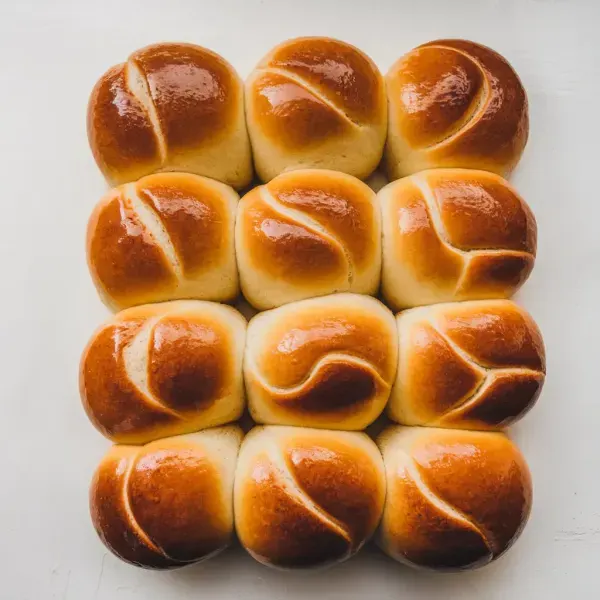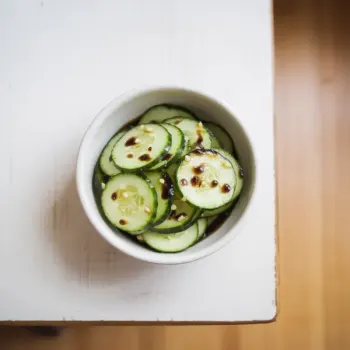
 164 minutes
164 minutesA soft and fluffy milk bread that is perfect for breakfast or as a snack, known for its tender crumb and slightly sweet taste.


Heavy Cream, at room temperature
cups
Whole Milk, at room temperature
cups
Large egg, at room temperature
each
cups
cups
Active Dry Yeast
tablespoons
teaspoons
Unsalted Butter, at room temperature, for greasing the pans
to taste
Egg, beaten with 1 tablespoon water (for egg wash)
each
Sugar, dissolved in 2 teaspoons hot water (for sugar water)
teaspoons
1. Prepare the Dough
In a large mixing bowl or the bowl of a stand mixer fitted with a dough hook, combine the heavy cream, whole milk, and egg. Once mixed, add in the sugar, flour, yeast, and salt. If using a stand mixer, knead the mixture on medium speed for about 15 minutes, until the dough becomes smooth and slightly tacky, sticking to the bottom of the bowl. If kneading by hand, expect to work the dough for about 20 minutes. The kneading process is essential as it develops the gluten, which is crucial for achieving that soft and fluffy texture.
2. Do the First Proof
Shape the dough into a smooth ball and place it back into the mixing bowl. Cover the bowl with an overturned plate or a damp kitchen towel to keep the moisture in. Let the dough rise in a warm, draft-free area for about 1 to 2 hours, or until it has doubled in size.
3. Shape the Dough
After the dough has risen, punch it down to release the trapped air. Knead it lightly for about 5 minutes to smooth it out. While doing this, grease your loaf pans or cake pans with unsalted butter to prevent sticking. Divide the dough into two equal portions if making loaves, or into 16 pieces if making buns. Shape each portion into smooth, round balls or loaf shapes and place them into the prepared pans.
4. Do the Second Proof
Cover the shaped dough with a clean kitchen towel and let them rise again for about 1 hour. During this time, they should puff up and almost double in size.
5. Bake
Preheat your oven to 350°F (175°C) about 15 minutes before the end of the second proofing. Brush the tops of the dough with the egg wash, which will give them a beautiful golden brown color after baking. Place the pans in the preheated oven and bake for 22 to 24 minutes, or until the tops are golden and the bread sounds hollow when tapped.
6. Cool and Serve
Once out of the oven, immediately brush the tops with the sugar water to give them a shiny finish. Transfer the loaves or buns to a wire rack to cool completely. Store any leftovers in an airtight container to keep them soft.
By adding a sweet red bean paste filling to the core dough, you can create a classic Asian bakery favorite. The lightly sweet dough complements the rich, sweet bean filling beautifully.
Incorporate a custard cream filling into the dough before baking. The creamy, vanilla-scented custard pairs well with the soft milk bread.
Though not containing actual pineapple, the name comes from the look of the sugar cookie crust that tops these buns. This crust is made from a dough consisting of sugar, egg, flour, and lard or butter, which is then placed on top of the milk bread dough before baking.
Mix minced garlic, chopped herbs, and grated cheese into the dough or sprinkle on top before the final proof. This savory twist is perfect as an accompaniment to pasta or soup.
Fill the buns with sweet and savory barbecued pork to make this dim sum classic. The dough's sweetness enhances the rich flavors of the char siu filling.
This gelatinization method retains moisture for a fluffier texture. Remember to cool it before adding to the dough.
Precision is crucial in baking. Weigh your ingredients, especially flour, for consistent results.
Develop gluten by kneading until the dough passes the 'windowpane test' for the right bread structure.
Proof the dough in a warm, draft-free area and use the poke test to ensure proper fermentation.
Verify oven temperature with a thermometer and bake until the loaf is golden brown and hollow-sounding.




Comments (0)